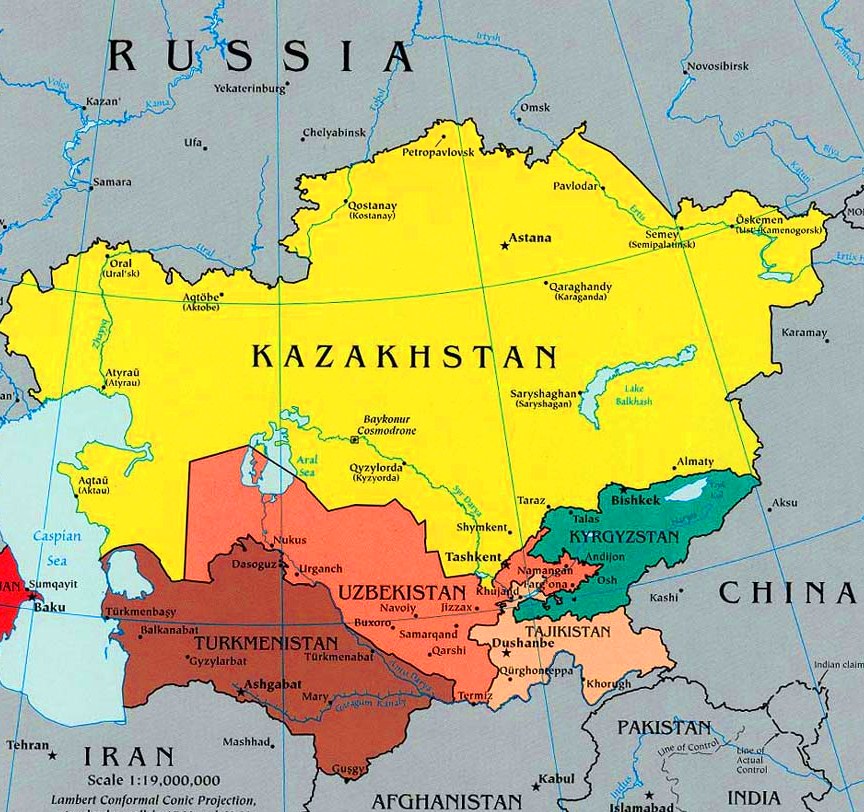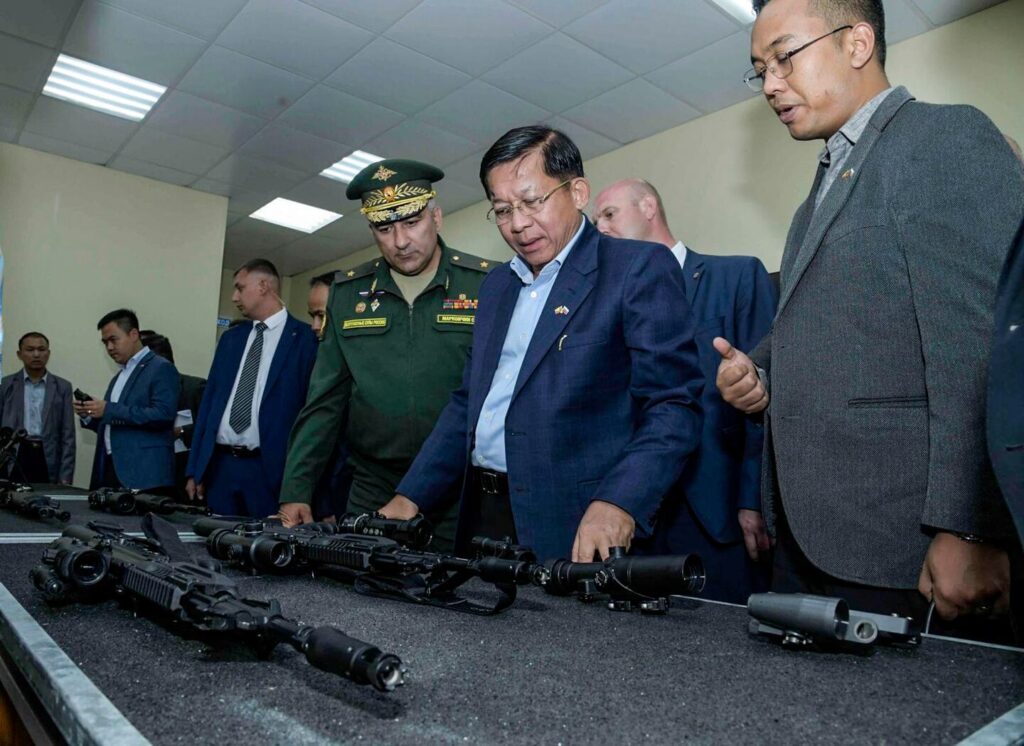MANTRAYA ANALYSIS#73: 30 OCTOBER 2023
SHANTHIE MARIET D’SOUZA & BIBHU PRASAD ROUTRAY
Abstract
For the past couple of years, India has used several forums and mechanisms to reach out to five Central Asian countries. Connectivity and economic integration with these countries being its key objectives, New Delhi has tried to evolve a common security outlook to foster a cooperative framework that will nudge these countries to look beyond China. However, instability in Afghanistan and India’s bilateral relations with Pakistan and China are the factors that pose continuous challenges to New Delhi’s objectives.

Common Security Threat: The Afghan dilemma
New Delhi appears to be relying on what it calls a ‘common security threat’ to establish a cooperative framework with the five Central Asian (CA) countries, [Kazakhstan, Turkmenistan, Uzbekistan, Kyrgyzstan, and Tajikistan. This was evident in National Security Adviser (NSA) Ajit Doval’s address to the second NSA-level meeting between India and CA countries on 17 October in Kazakhstan.
Doval underlined India’s concerns regarding the prevailing situation in Afghanistan. He blamed a “particular country” (i.e. Pakistan) for denying connectivity between India and the central Asian region. He also indirectly blamed China’s infrastructure projects in Pakistan-Occupied Kashmir (PoK) for violating India’s sovereignty and argued that such projects should respect the sovereignty and territorial integrity of all countries. “They should also adhere to environmental parameters, ensure financial viability, and not become debt burdens”, he said.
The concerns highlighted remained more or less similar to the ones mentioned during the first NSA-level meeting hosted by India in New Delhi on 6 December 2022. During that meeting, the NSAs discussed the challenges of extremism, terrorism, and radicalisation in the region. NSA Doval had said financing is the “lifeblood” of terrorism, and countering it should be a priority.
India brought a bouquet of offers for the CA countries in Kazakhstan. This included ‘fully funded capacity-building programmes in a range of areas to tackle both terrorism and drug trafficking’; ‘close cooperation to help CA countries build defences against cyber threats and create a secure cyber ecosystem’, invitation to the ‘heads of cyber security agencies of the CA countries to India for a “strategic cyber experience” and offer of providing India’s United Payment Interface (UPI) technology free of cost to facilitate the setting up of sovereign digital real-time payment systems in line with the needs of these countries. India has also proposed the setting up of an India-Central Asia Rare Earths Forum to explore partnerships in strategic minerals.
Multi-layer Threat Perceptions: Need for a Cooperative Framework
For India, engagement with the CA countries is important because of a range of reasons — security cooperation after the Taliban takeover in Afghanistan; to counter China’s influence in the region; plans for connectivity with Europe including the International North South Transport Corridor (INSTC); to meet its energy needs (Turkmenistan is part of the proposed, but much-delayed TAPI gas pipeline); and for reasons of old cultural links and trade potential.
To achieve some of these objectives, in various forums, India has tried to draw similarities between the security concerns of New Delhi and the CA countries. For instance, at the 19 December 2021 meeting of India-Central Asia foreign ministers, External Affairs Minister S Jaishankar told his Central Asia counterparts that their “concerns and objectives” in Afghanistan were “similar”, and their goal was “a truly inclusive and representative government, the fight against terrorism and drug trafficking, ensuring unhindered humanitarian assistance and preserving the rights of women, children and the minorities”. On 27 January 2022, Prime Minister Narendra Modi held a virtual summit with the leaders of CA countries. He called for an integrated approach to regional cooperation and flagged Afghanistan as a common concern.
Since early 2022, India and the CA countries have established a multi-level periodic engagement framework. This includes a leaders’ summit every two years; regular meetings among their foreign and trade ministers; a joint working group on Afghanistan; joint counter-terrorism exercises between India and interested Central Asian countries; and a group to operationalise the use of Chabahar port by all five countries.
Countering China: Being on Board?
While it is inevitable that the CA countries, three (Turkmenistan, Uzbekistan and Tajikistan) of which have borders with Afghanistan, share some of the security concerns highlighted by India, and will also be amenable to the prospect of increasing their bilateral trade with New Delhi, are they fully on board with what India wishes to achieve in that region, especially with regard to the BRI? That appears unlikely.
While being partly weary of Beijing’s political ambitions and concerned about their over-reliance on China, some CA countries do see benefits of the BRI. Unlike India, China has a direct border with the CA region. It has a bilateral annual trade of $50 billion with Central Asia. India’s trade with the region, in comparison, is a paltry $2 billion. Not surprisingly, as the India-CA countries NSAs were meeting in Astana, the heads of state or representatives of three of these countries were in Beijing to attend the Third Belt and Road Forum for International Cooperation on 17 and 18 October.
On 18 October, Kazakh President, Kassym-Jomart Tokayev, in his speech at the Forum, noted the key role of China in ensuring global security and called it the locomotive of economic and technological development. The Kazakh Presidential Press Service reported Tokayev’s speech in detail, which was full of appreciation for the BRI and his commitment to remain a part of the project.
Turkmenistan was represented at the Forum by ‘National Leader’ Gurbanguly Berdimuhamedov, Chairman of the People’s Council of Turkmenistan. Gurbanguly Berdimuhamedov, till March 2022 was the country’s President and currently his son, Serdar Berdimuhamedov, holds the post. At the sidelines of the Forum, Chinese President Xi Jinping and Gurbanguly Berdimuhamedov met to sign a number of bilateral agreements. Xi Jinping also promised to “strengthen the alignment between the BRI and Turkmenistan’s development strategy”, according to Chinese media. Incidentally, Turkmenistan, which shares excellent relations with Beijing, for instance, has not sent its NSA (or any senior security official) to the meetings in New Delhi and Astana, asking its ambassadors in those countries to participate.
Uzbek President Shavkat Mirziyoyev, who attended the Forum, was personally greeted by President Xi. This was Mirziyoyev’s second visit to China this year, the first being for the China-Central Asia Summit in the city of Xi’an in May.
The two CA countries who were among the absentees at the Forum were Kyrgyzstan and Tajikistan. However, in both these countries Chinese economic influence is widespread. Both are part of the BRI and have been roped into a large number of infrastructural as well as connectivity projects by Beijing.
Way Forward: Keeping the Dragon at Bay
India does not want the post-Soviet space in Central Asia to be completely under the influence of the Chinese. Constant engagement with these five CA countries leading to some concrete achievements, hence, is a key mechanism in Delhi’s toolkit. New Delhi realises that the TAPI project may not see the light of the day, due to both instability in Afghanistan and Pakistan’s negative attitude.
Hence, it has tried to focus on integrating the INSTC with Chabahar port in Iran to access the CA region. The INSTC envisages the movement of goods from Mumbai to Shahid Beheshti Port – Chabahar (Iran) by sea, from Chabahar to Bandar-e-Anzali (an Iranian port on the Caspian Sea) by road, and then onwards to Astrakhan (port in the Russian Federation) by ship across the Caspian Sea, and after that to other regions of the Russian Federation and further into Europe by Russian railways. Western sanctions on Iran and Russia have made Tehran and Moscow look at the INSTC project with renewed interest. However, the actual implementation of the project could take years, without a clear roadmap.Time is of the essence here. India’s Central Asian outreach needs to gather pace. At the same time, New Delhi while crafting its outreach strategies needs to factor in the existing integration between the economies of those countries with that of China. While meeting the Chinese influence can be a long-term goal to pursue, India can certainly bring in its own unique strengths and expertise to boost the relationship in areas of trade, transit, connectivity, and integration to actualise its Central Asia Connect policy.
(Dr. Shanthie Mariet D’Souza is Founder & President, MISS. Dr. Bibhu Prasad Routray is the Director of MISS. This analysis has been published as part of Mantraya’s ongoing “Regional Economic Cooperation and Connectivity in South Asia” project. All Mantraya publications are peer-reviewed.)




